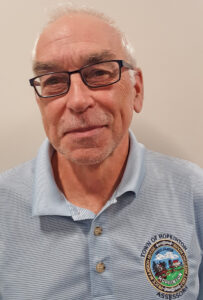John Neas became Hopkinton’s principal assessor in 2015, after serving in a similar role in Norfolk. A native of Framingham and an alumnus of Boston College, Neas resides in Franklin, where he previously served on the Board of Assessors.
Neas is president of the Massachusetts Association of Assessing Officers (MAAO) and has taught courses for the MAAO as well as UMass.
Hopkinton Independent: How did you get started in this career?
John Neas: “I originally worked for a little while in real estate sales, in listing and brokering. I didn’t like that too much, though. Then I managed a real estate office for a while. In one of those offices I set up an appraisal division, which is how I got started in valuation. Then in 1983 and for about 25 or 30 years formed my own appraisal company, worked basically for myself. Then I worked for Avery Associates in Acton for about five years. After that I decided to transition into assessing. I wanted to stay in the valuation field, but I was looking for something a little bit different and with a little more security. I went to Norfolk first, in January 2009, then I came to Hopkinton in 2015.”
HI: What drew you to Hopkinton?

John Neas
Neas: “I came to Hopkinton for salary reasons, but it was a community I had always wanted to come to. I never thought the former assessor [Bob Bushway] would retire. He moved to a position in Milton, which opened up Hopkinton. It doesn’t have a lot of commercial and industrial property but it does have more than what I had in Norfolk. It’s a very exciting place, Hopkinton.”
HI: What are your primary responsibilities?
Neas: “The primary responsibility is to maintain accurate and reliable information on all the taxable property in town. We are responsible for raising revenue from real estate taxes, from personal property taxes and motor vehicles. And when we determine all those values we have to meet certain division of local services standards in order to certify every year in order to set a tax rate.”
HI: Is your department working on or has it recently completed any big projects?
Neas: “We recently put together a Senior Solutions Guidebook, and we have that both online on the [town] website and in hard copy at the Senior Center. It basically helps take the seniors through every type of exemption that they are eligible for. We’re kind of proud of that in terms of helping them. We’ve also done a program with them at the Senior Center, and we did a program on cable TV with the Senior Center. We also in Hopkinton a couple of years ago instituted a new program, which is Senior Tax Relief, and it’s tied into the state’s circuit breaker program. It had to be done by home rule petition. As assessors we are trying to make it statewide, but right now there’s probably only a half a dozen or so communities that have it. So we’re kind of proud of that program. You have to qualify, there are obviously to all of these issues income and asset limitations, but that program has given away as much as $2,200 in tax relief to a qualified senior. We also have a lot of different exemptions for seniors, hardship cases, veterans, people that are blind, people that are over 65 or 70 in age, and a senior work program where they can spend some time working in town and earning some credit toward their taxes.”
HI: What are the biggest challenges in your job?
Neas: “One of them is certainly data collection, and with the pandemic that’s been even more difficult. We have a number of situations where we need to inspect property. We have something called the cyclical inspection program, where the state requires us to look at every property in town at least once every 10 years, both exterior and interior if possible. We have people that call and they want us to do an inspection of the property. We have abatement applications that are filed when people think their property is overvalued. The inspection program to maintain accurate records is a big part of our program, and in the pandemic, obviously with the limitations and without going to do many of those inspections it’s been quite a challenge. We have faced that in one way by subscribing to some new aerial imagery which gives us aerial and oblique and all kinds of images of property and helps us to see some changes that we would normally see if we were out in the field in person. So that has been a challenge.”
HI: What is the most enjoyable part of your job?
Neas: “I think it’s two things: Making sure that our values are fair and equitable, so that all of the residents are treated well. And it’s also meeting with and discussing issues with residents in town, property owners in town.














0 Comments